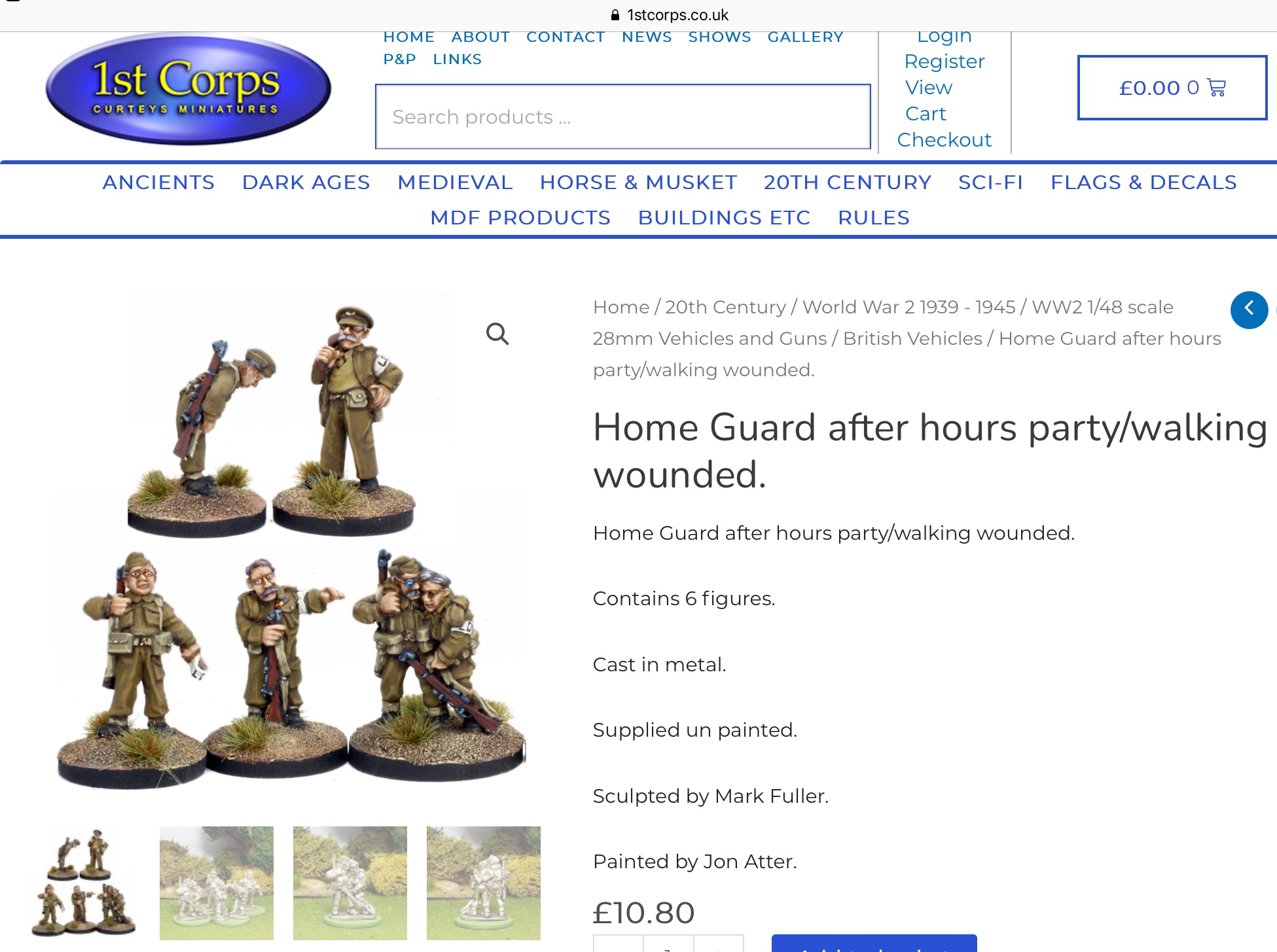
Category: tabletop gaming
Wade’s Whimsies and the Defence Of Bloodford Village 1940

Who doesn’t like a good old gaming scenario map?
Spotted on eBay (screenshot image source), a curious (reprint?) publication called The Defence Of Bloodford Village 1940 by Colonel G.A. Wade MC.

According to Abebooks, cheap used copies of a reprint made in 2016 or print on demand copies are only a few pounds with
“colour maps …
A fascinating “what might have been” account of a fictitious defence of an English village by the Home Guard in the Second World War. Published by the Home Guard late in 1940 when the invasion scare was at its height, the booklet, illustrated with maps, presents a narrative of a war game that might have become all too real. Used in Home Guard training to provides ideas and strategies, the publication gives a unique glimpse into British defences against Operation Sealion.”
Colonel Wade wrote other Home Guard volumes such as Defence Of Houses, 1940 (reprinted) 
And according to the SF Encyclopaedia website a wide range of training manuals:
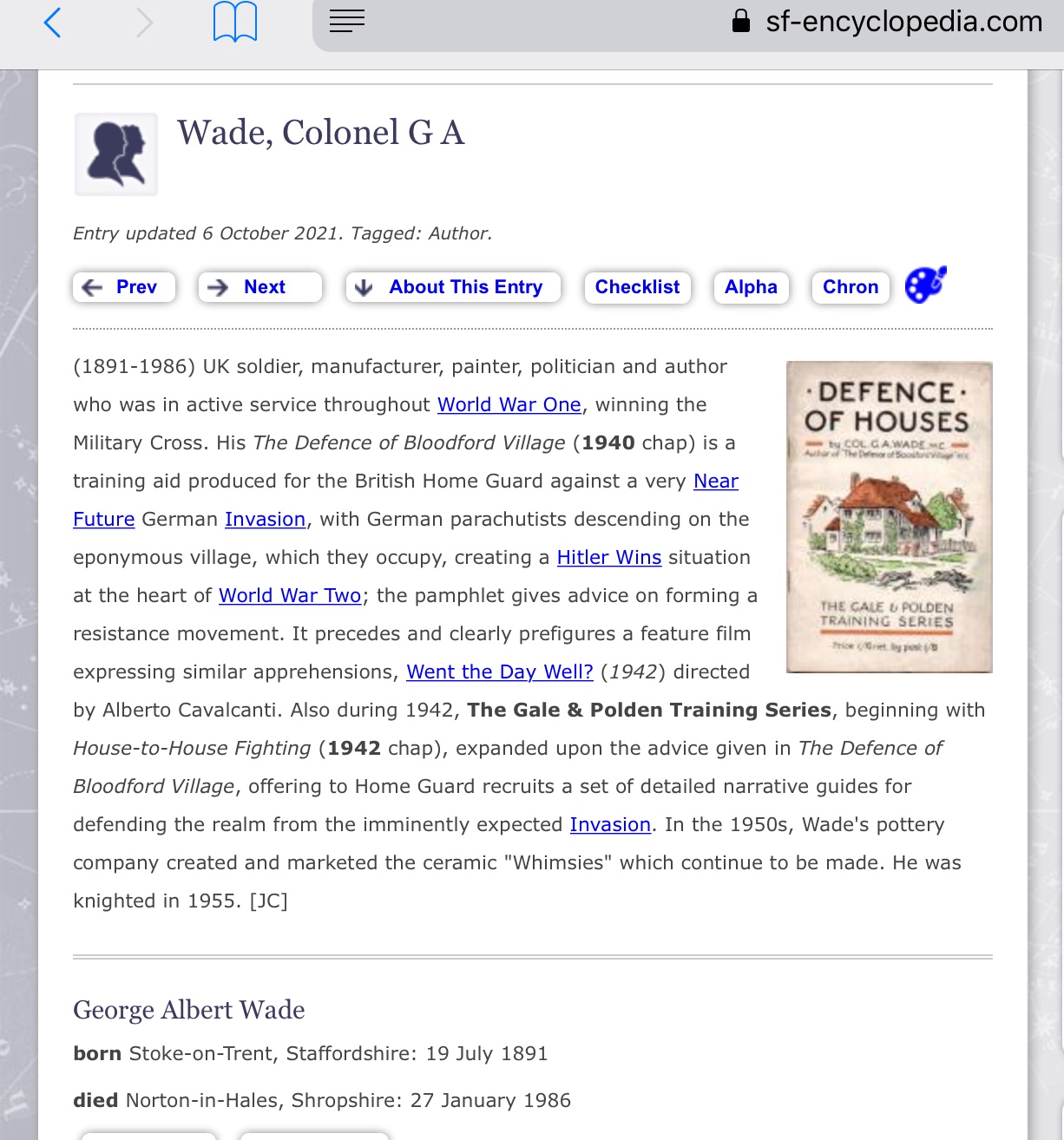

More Wade Home Guard reprints available here: https://shop.royalarmouries.org/collections/home-guard-training-series

Wade’s Whimsies?
Even stranger, this Colonel George Wade MC was part of the Wade Potteries that produced Wade’s Whimsies, those collectible 1950s to 1970s pottery animals.
At first hearing, Wade’s Whimsies sound like they could have been those strange and deadly (mostly to its users) improvised Home Guard weapons, his version of the weird Hobart’s Funnies tanks from D-Day.
Instead, they were small collectible pocket money ceramic animals.
“Sir George Wade was born George Albert Wade on the 19th July 1891 in Burslem. His father, also George, owned a pottery in Burslem. When George Jnr returned home after the First World War, (he was awarded the MC for Valour in December 1917 with a Bar added in January 1919), his father made him a partner in the company and thereafter the company was called George Wade & Son Ltd.”
In the 1930s, Wade were producing collectible ceramic animals.
During the war Wade was busy writing the Gale and Polden Home Guard training series of books.
“… In the 1950s, Wade began working with the talented modeller William Harper, who worked on developing the now famous Wade whimsies concept …”
https://www.potteriesauctions.com/news/the-wonderful-history-of-wade-pottery
Wikimedia photo of Wade’s Whimsies
Wade’s WW1 military record is described in more detail here:
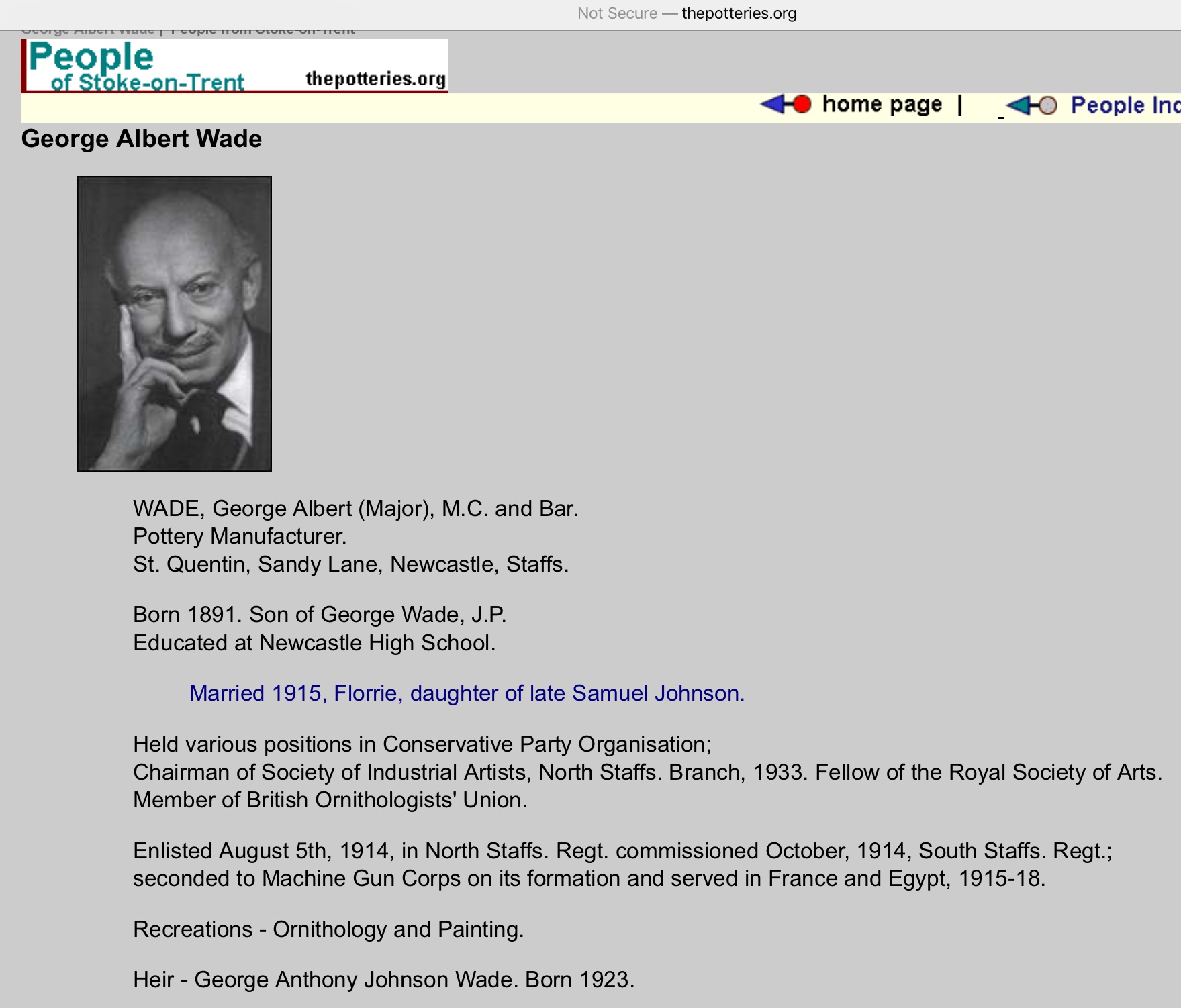
My few chipped and battered Whimsies from childhood crackers are now long gone (my late Mum had a small collection too).
Sadly as of December 2022, after 150 years Wade’s pottery has now closed. A victim of energy price rises (partly the Ukraine conflict?)
Another small British pottery or ceramics company like Lilliput Lane gone. https://www.wadecollectorsclub.co.uk
Blog posted by Mark Man of TIN, 28 March 2023
Mounted Home Guard LDV units of Exmoor

Interesting photo in this Exmoor in Wartime 1939-45 by Jack Hurley of Exmoor Mounties, a LDV and Home Guard mounted unit on Exmoor:

An interesting introduction taking the Somerset Home Guard back to their Fencible and Sea Fencible (1798) Napoleonic Volunteer equivalents.

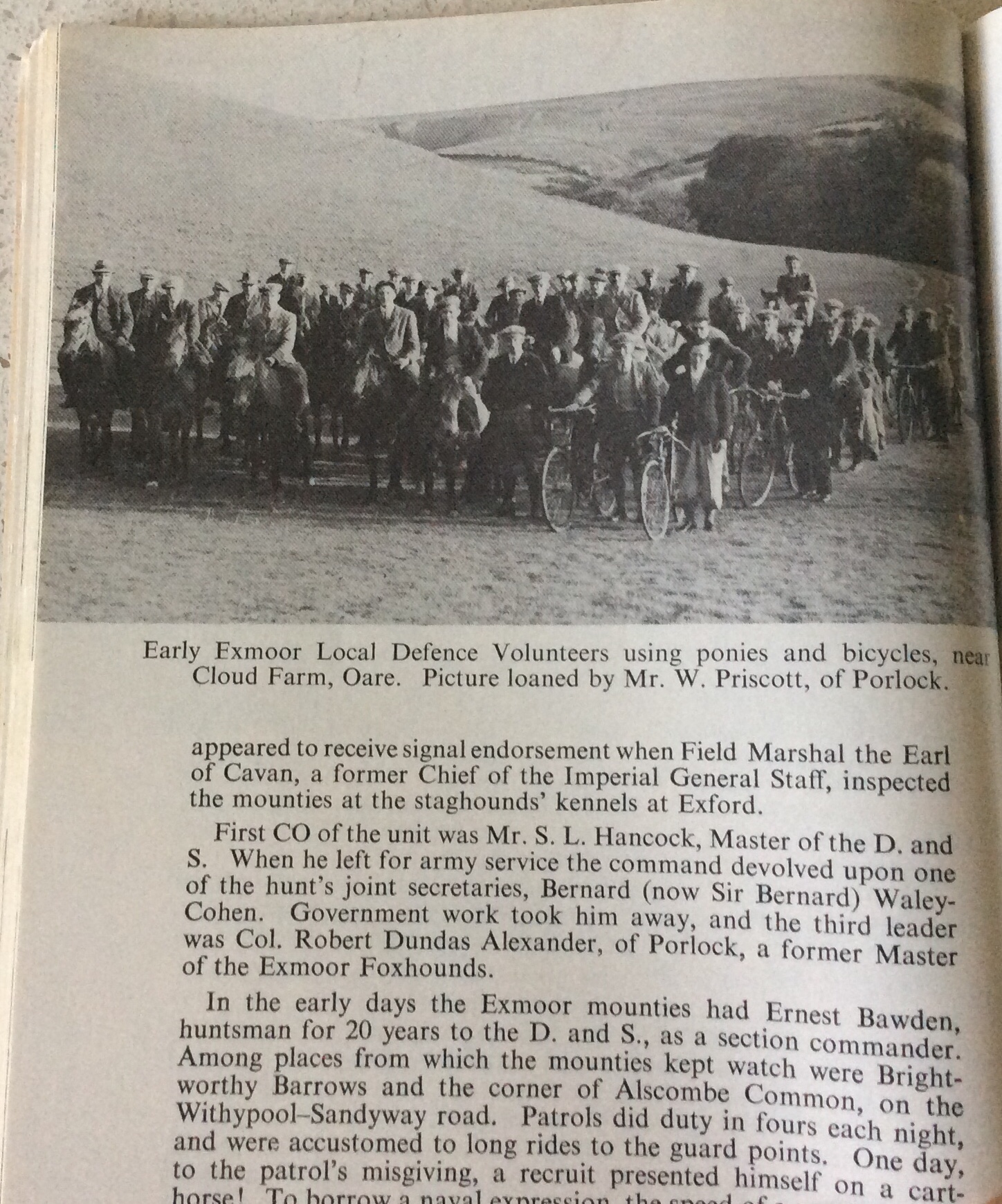
Peter Cole at Replicants produced a 54mm mounted Home Guard, although I cannot find this mounted figure on his distributor Steve Weston’s Plastic Soldier website:
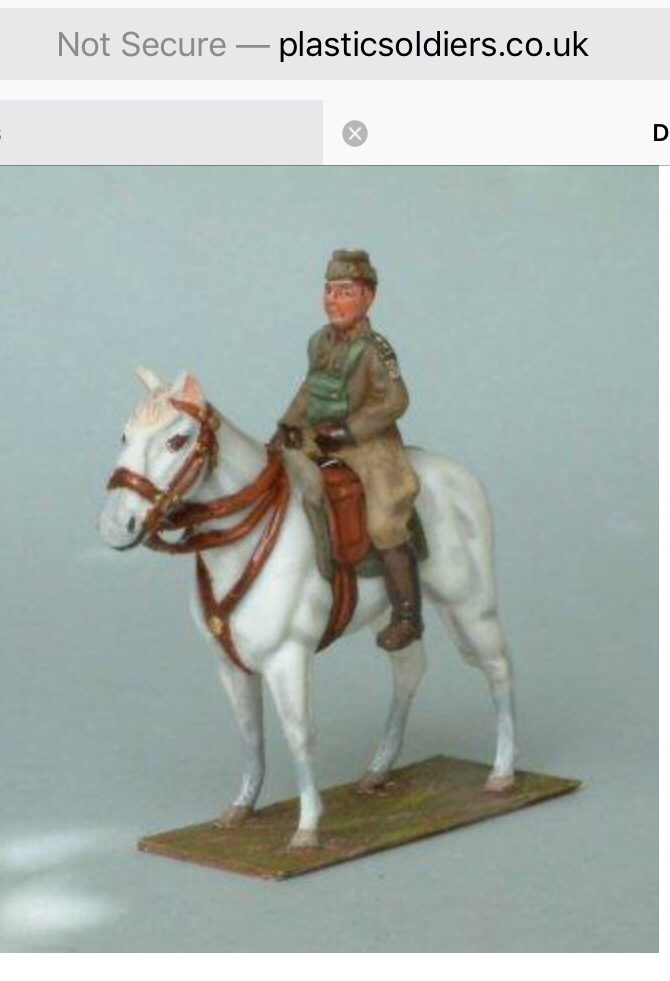

Further quirky newsreel shows Home Guard Horse Holders and Despatch Riders:
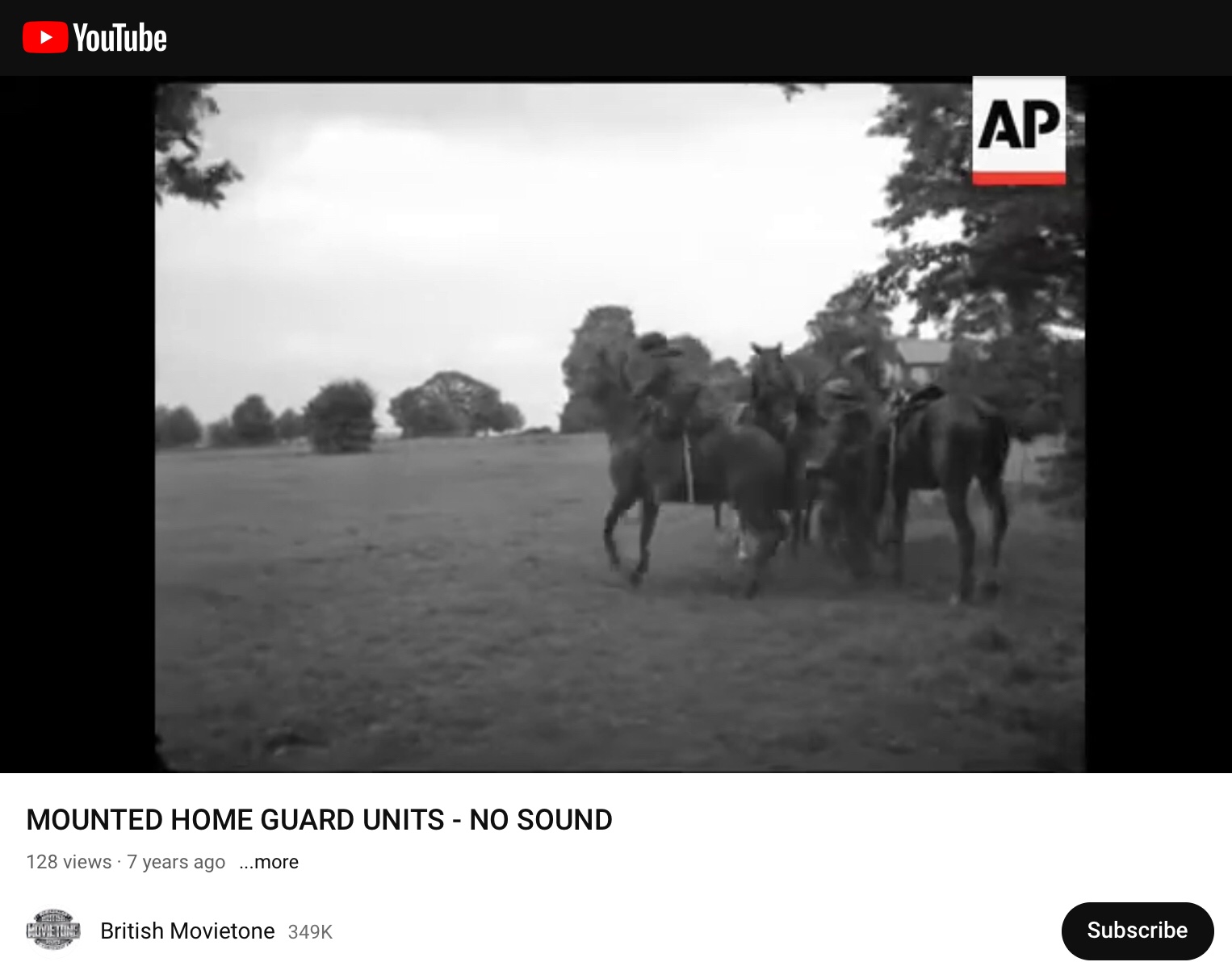
Watch at Youtube https://youtu.be/B11pNBLh8Cc
Blog posted by Mark Man of TIN, 27 March 2023
U Boat crew in WW2 caught watering on the rugged Devon coastline – a possible Home Guard scenario?
 w
w
Interesting snippet from Wild Guide: Devon, Cornwall and the Southwest
I have found several articles on this Heddon’s Mouth and Sherrycombe (Devon) U-boat Story. This would make in future some good Dad’s Army type ambush scenarios for the Home Guard on patrol meeting or ambushing a U boat watering party.
Can they capture and take any crew prisoner for questioning?
Such a skirmish scenario need not be too tied to this exact geographical location.
Source Material:
Exmoor’s rugged and uncompromising coastline for long sheltered one of the best-kept secrets of World War Two.
It was not until a decade after World War Two that the truth emerged about visits paid by German U-boats in the dead of night to isolated inlets along the North Devon coast, in search of fresh water supplies.
The wartime escapades came to light through a moving human story, which illustrated how one man’s attachment to the beautiful Exmoor landscape survived the cramped on-board conditions and the dangerous missions synonymous with the legendary German submarines.
Alan Kift of Ilfracombe was owner and skipper of the Devonia Belle, a pleasure boat which specialised in carrying up to 75 passengers along the coast between the resort and Lynmouth Bay.
A regular companion of Alan on the trips was a fellow boatman, the late Les Gear, who in the 1950s had been chartered by a German visitor to take him to the waterfall at Sherrycombe, under the Great and Little Hangman cliffs, near Combe Martin.
Alan recalls: “Les was a plain-speaking sort of chap and he asked the German why on earth he wanted to go to that particular spot, and how he knew exactly where the waterfall was located.
“The visitor, a Captain Martens, said that during World War Two he had been the captain of a U-boat operating in the Irish Sea and the Bristol Channel.
His vessel, and other U-boats, would lay up off the beach, probably during the spring tides, and land sailors by dinghy to fill casks and other containers with fresh water.
“The submarines were not only cramped but also stank of things like diesel fuel and battery acid. Not only was the fresh water needed by the crew, but the sailors also welcomed the chance of fresh air and exercise.”

“Captain Martens was very emotional when the boat reached Sherrycombe and had tears streaming down his face when he told Les Gear that although he had landed at night, by the moonlight that often accompanies spring tides, he had been so impressed by the beauty of the scenery and the height of the cliffs (at 800 feet or 244 metres Great Hangman is the highest sea cliff in England) that he wanted to come back and see it again in the daylight.”
The 1950s incident had a sequel some years later, involving a major coincidence. The Devonia Belle was a favourite with the Country Cousins Language School and Alan Kift used to relate the story of the U-boat landings during his commentary to the passengers.
On one occasion, during the cruise, he was approached by the man in charge of a party of German students on board that day, who introduced himself as Captain Martens’ son, Wolfgang.
“It was such a coincidence that not only was Wolfgang Martens a passenger, but that Les Gear was also on board that day. I was able to introduce them and Les was able to give Wolfgang a first hand account of how he had taken his father to Sherrycombe. It was an unbelievable coincidence, and in many ways an unbelievable but moving story, but one that is completely true.”
Copied for research purposes from the Archant magazine group Devon Life web story so that it doesn’t disappear as website stories tend to do when you go looking for them again.
Heddon’s Mouth https://en.m.wikipedia.org/wiki/Heddon%27s_Mouth
https://www.nationaltrust.org.uk/heddon-valley
*
This story reminds me of a similar eyewitness story from WW1 by a British schoolboy, Arthur Madge told in 2014 when he was 107 years old about spotting a U boat sheltering on the Cornish coast in WW1.
This story emerged during the WW1 centenary. It would suit a Scouting Wide Games type scenario with Boy Scout / Sea Scout coast watchers.

Listen on BBC Sounds / online:
https://www.bbc.co.uk/sounds/play/p02n7jcl
If you can’t listen to this online, here is the outline of this remarkable story with Arthur Madge at 107, telling his U-boat story in person about 13 minutes into the feature:

*
Blog posted by Mark Man of TIN, January 2022
Airfix 1:32 WW2 British and German sets of Infantry and Paratroops reissued for Summer 2021
https://manoftinblog.wordpress.com/2021/01/08/airfix-ww2-132-figures-54mm-rerelease-for-summer-2021/

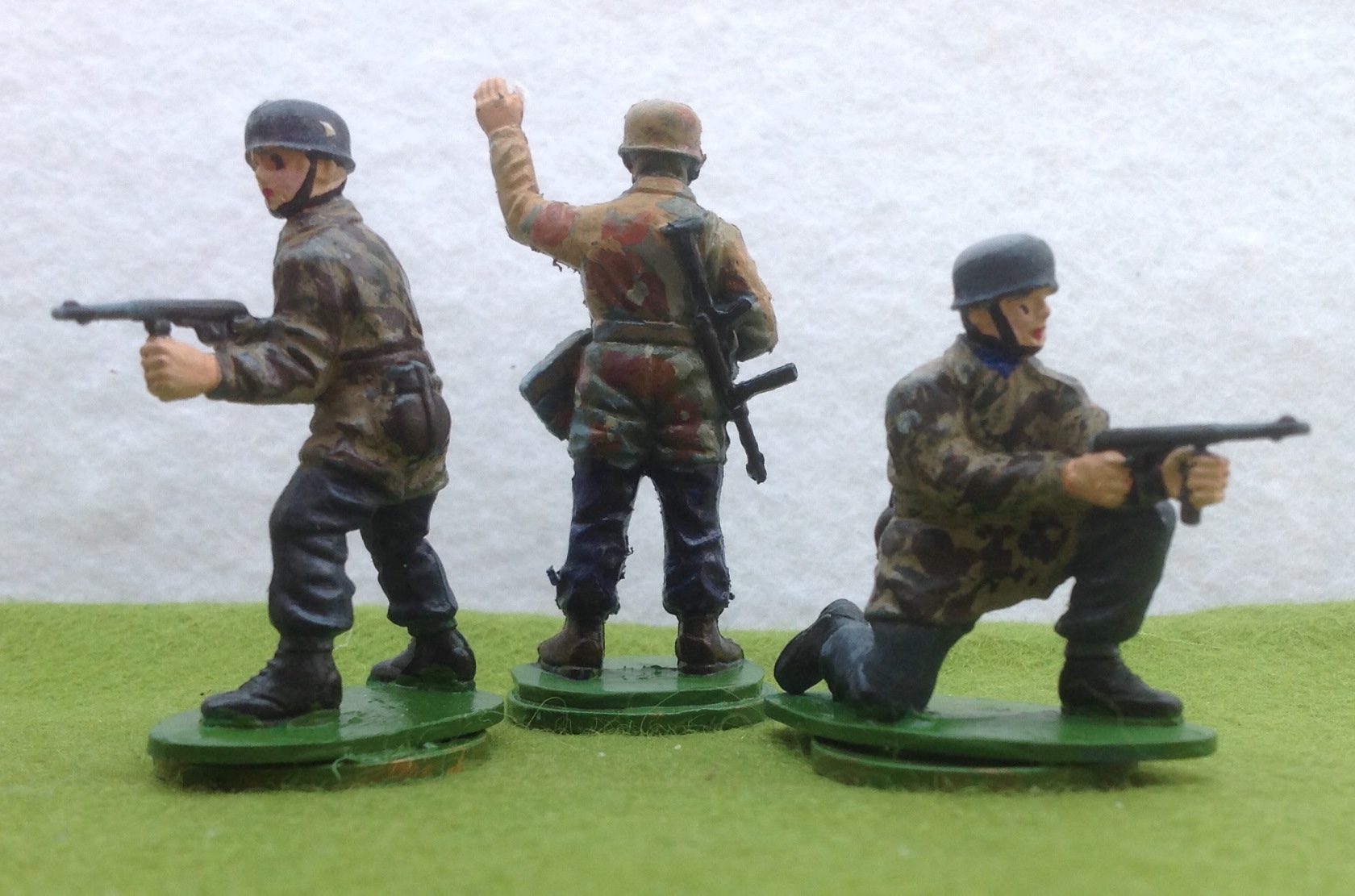
German Paratroops available again! Reinforcements for my childhood painted ones
Blog posted by Mark Man of TIN 8 January 2021
Useful German phrases for the Home Guard
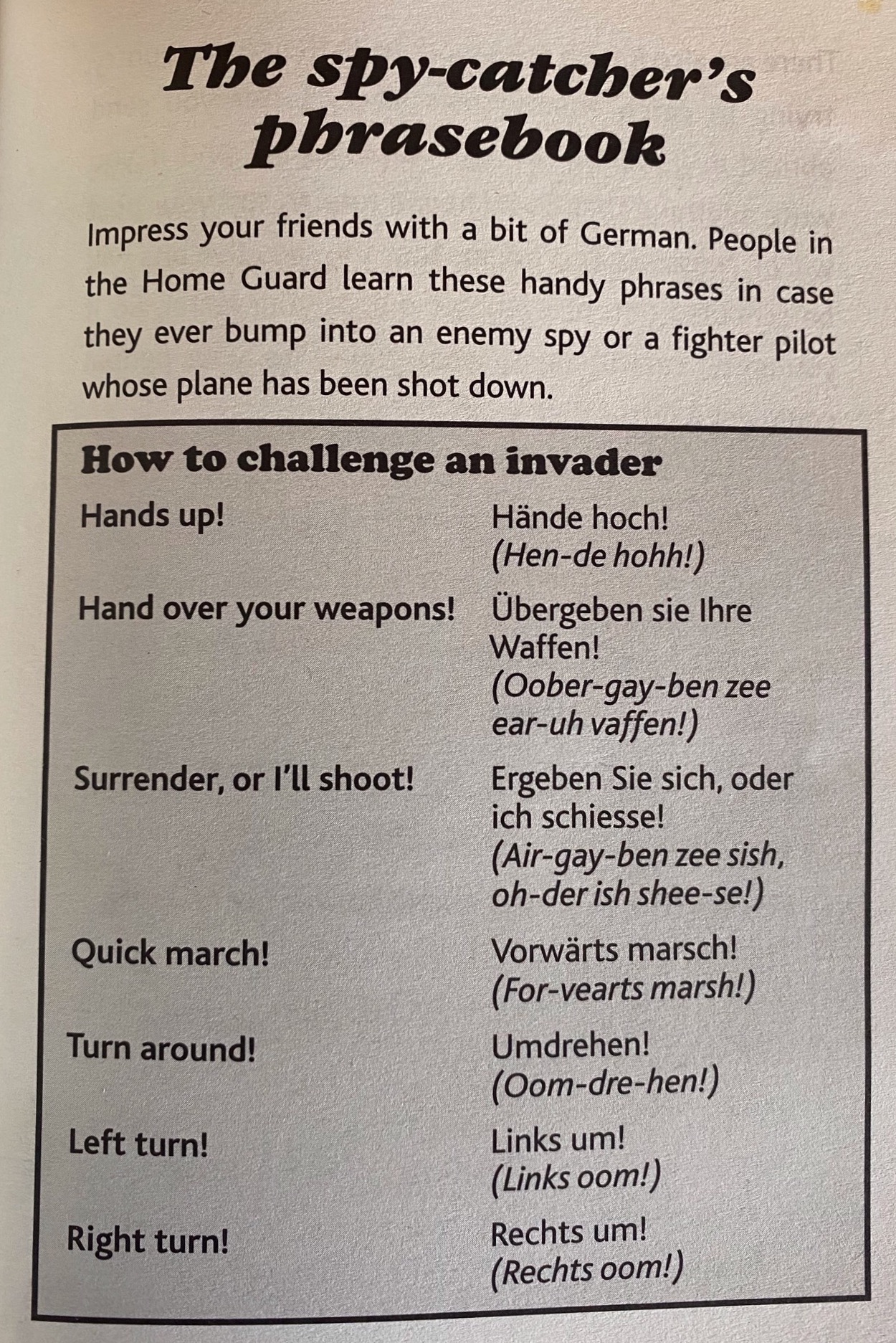
Not taken from a Home Guard Manual (as far as I know) but from the WW2 Blitz 1940 version of Jo Foster’s imaginative children’s history books in her Time Spies paperback series c. 2009/10.
I have flashbacks to Battle and Victor comics of the 1970s and also to Corporal Jones in the BBC Dad’s Army series, ordering German prisoners of war (captured pilots, U Boat crews) around with his fixed bayonet. (The wonderful “Don’t Tell Him, Pike!” Episode)
Blog posted by Mark Man of TIN, 8 January 2020
Hand Drawn Home Guard Maps – Daily Mail article
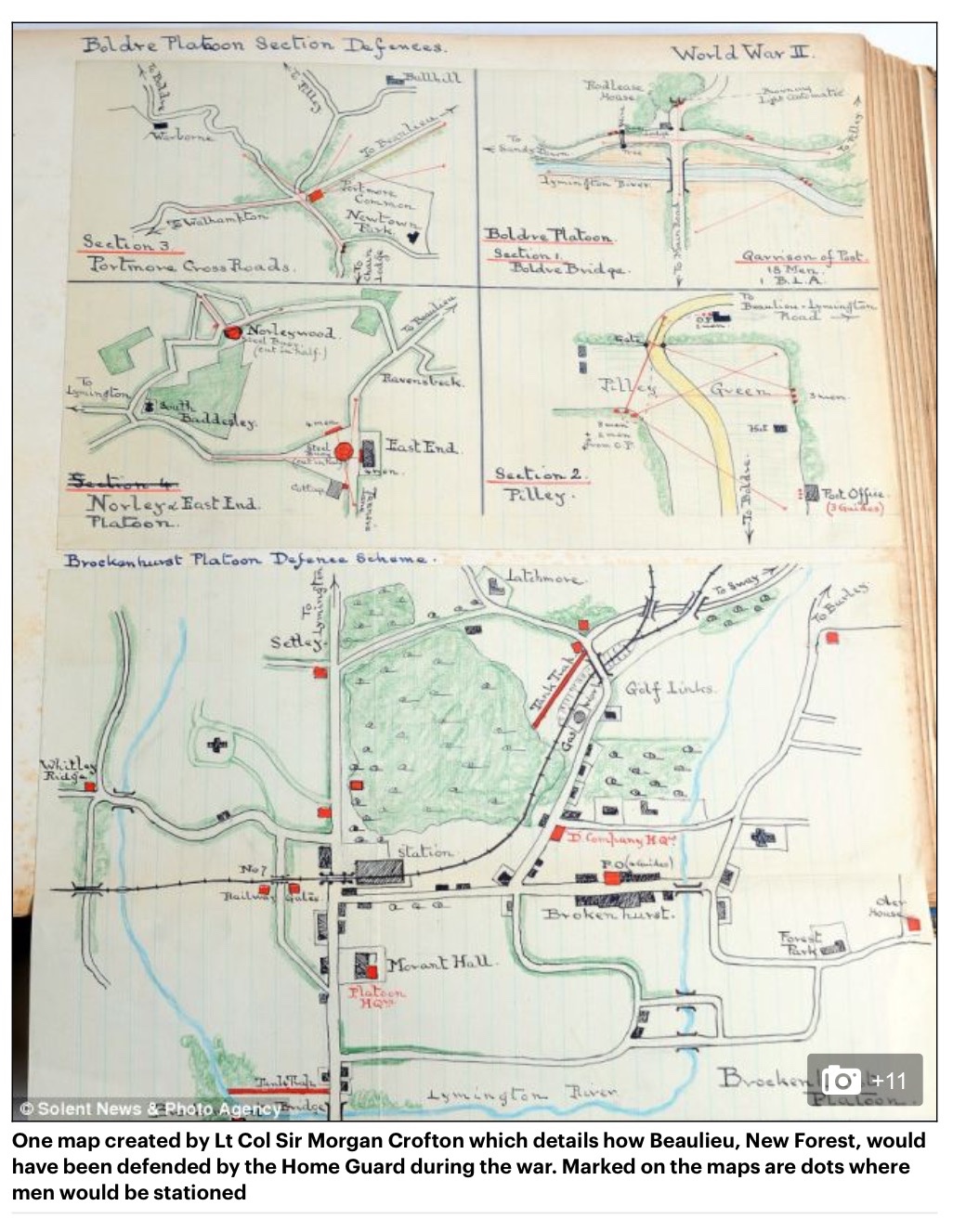
Detailed maps for the Home Guard defence of the village of Brockenhurst and surrounding areas. What is recorded here in pen and ink is remarkably close to the textbook examples set out in various Home Guard training manuals.
All photographs remain copyright of the Solent News and Photo Agency. They are shown here for historical reference.
Hand drawn plans for the defence of Beaulieu

Why I have put the article link here and copied two of the plans as reference is not just because such material seems to disappear from the web when you look for it again,
but also because they are a good test scenario for anyone exploring through gaming the historical likelihood of the Home Guard surviving a German airborne or seaborne invasion.
Looking at maps like these, you realise more that the Home Guard should be seen both as a deterrent and “suicide squad”, whose job on their own known and prepared home ground was to delay the German attack village by village, town by town, for a few vital hours whilst the regular army could be mobilised into suitable position.
They are in modern emergency services terms the equivalent of First Aiders and First Responders.
It is open to question whether in an Invasion scenario there was the chance for the Home Guard to withdraw and melt away to avoid heavy losses or an expectation that they should stand their ground and sell themselves dearly.
Thankfully this question was never tested out in real life. Exploring this through tabletop or board gaming is thankfully our only option to resolve this question.
Blog posted by Mark Man of TIN, 10 September 2020 / March 2023
Walmington on Sea Dad’s Army Map
From the quirky Dad’s Army Museum website
https://dadsarmythetford.org.uk

Image source: Wikipedia https://en.m.wikipedia.org/wiki/Walmington-on-Sea
… this ‘labour of love’ mapmaking for somebody, making a whole fictional seaside town no doubt by piecing together the different tactical sketch maps that Captain Mainwaring draws in chalk on the black board for Home Guard exercises.

It is a great looking little Museum in Thetford with an interesting online shop, selling several interesting Dad’s Army books and a (scale?) model of Jones’ van.
Sadly it is on the other side of the country from me, so I won’t be visiting in person anytime soon.

Blog posted by Mark Man Of TIN, updated March 2023
Auxiliary Unit OB underground base uncovered in Scotland 2020

Scallywags! I had heard of “Stay Behinds” but not heard of this term for the secret Auxiliary Home Guard units.
An OB underground base has turned up in good condition in a recently cut forestry areas of Southern Scotland and been surveyed by an archaeology team. It is now officially closed and a bat roost entrance put in place.
https://www.archaeology.co.uk/articles/home-guard-auxiliary-bunker-discovered.htm

https://forestryandland.gov.scot/blog/ww2-bunker-rediscovered
 Lockdown 1940 style? A spirited reconstruction sketch of life which makes it look less cramped than it would be for seven men for weeks. Illustration: The Craigielands Auxiliary Unit Operations Base as it may have looked in WW2. © FLS / Alan Braby.
Lockdown 1940 style? A spirited reconstruction sketch of life which makes it look less cramped than it would be for seven men for weeks. Illustration: The Craigielands Auxiliary Unit Operations Base as it may have looked in WW2. © FLS / Alan Braby.More of the archaeology report photos can be seen here in this Daily Mail article:

Interested? You can check what is known about your local auxiliary units and surviving OB bases at the wonderful Auxiliary Unit / Home Guard CART Coleshill House website:
An excellent skirmish game scenario for a forested area and an underground base of a small number of seven Auxiliaries in civvies or Home Guard uniform against Operation Sealion German forces would be an interesting What If? Scenario.
Demolition. Return unobserved to the OB. Breakout from the surrounded OB. Lots of ideas
Two old boxes of Airfix and a lot of trees – A handful of British Infantry or commando figures versus the Nazi hordes – you have an interesting game. Your rules …
Blog post by Mark Man of TIN, 13 August 2020
Steve Weston WW2 British Infantry 54mm as Home Guard?

There are a host of useful plastic and metal figures in 54mm that you can use for Home Guard games.
These 54mm 1:32 British Infantry figures are a useful set of figures, currently available from their creator Steve Weston of Weston Toy Co. via his Toy Soldiers web shop site:
http://plasticsoldiers.co.uk/index.php/manufacturer/weston-toy-co/
There is a great (2020) deal of three sets of these for £10.00, which is 36 figures for £10.00. This is probably the cheapest new 54 – 56mm figures of this type and quality you will currently find, on special offer as they have had water damaged packaging.
They are described on their retail site as British Khaki infantry, “scaled to sit nicely with Matchbox, TSSD (Toy Soldiers of San Diego), Conte and Austin Miniatures. Superb detailing, excellent quality plastic. Currently the only company currently producing 56mm WWII British figures in plastic!”
This deal is also still available (mid 2020) through the related eBay shop chopped-merc

These attractive plastic figures are steel helmeted, lightly equipped figures with no haversacks and only light webbing, ammunition pouches, water bottles and entrenching tools, which fits the mid to late Home Guard well.








Blog posted by Mark Man of TIN on Home Guard founding day, 14 May 1940 / 2020.

